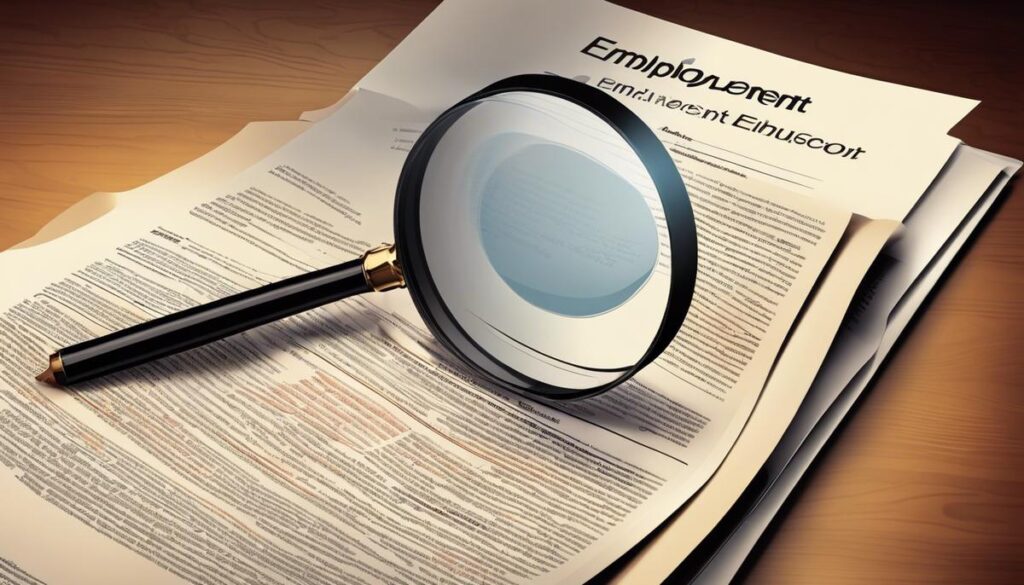The world of self-employment brings with it a multitude of freedoms, flexibility, and financial opportunities. However, it also comes with certain obligations and complexities, specifically in the realm of taxation. Understanding and effectively managing self-employment taxes is imperative for every entrepreneur. The self-employment tax, introduced to cover the Social Security and Medicare contributions for those working for themselves, can lead to significant financial liabilities if not well-handled.
Moreover, maintaining accurate financial records is vital in managing one’s tax obligations. Having detailed records of income and expenses eases the process of estimating and eventually paying these taxes. Given the ballpark of tax deductions available to the self-employed, knowing what can be claimed and how it affects the tax can make all the difference in lowering tax bills. Lastly, it’s critical to stay informed about tax-efficient retirement planning strategies to maintain financial health in the long-run.
Defining the Self-Employment Tax
When you hear the term ‘self-employment tax’, it might sound like something intimidating or complex. But fear not! It isn’t as enigmatic as it first seems, nor is it a looming financial pitfall waiting to ensnare unsuspecting entrepreneurs. Instead, it’s a crucial aspect of fiscal responsibility that every entrepreneur should strive to understand.
So, what is this tax exactly? Self-employment tax is a nod towards paying Social Security and Medicare taxes. Traditional employees have these taxes automatically deducted from their salaried paychecks, with employers also contributing their share. However, those who are self-employed handle these taxes themselves. This includes freelancers, independent contractors, or anyone else working for themselves.
Unraveling the details, self-employment tax in the United States usually amounts to 15.3%. The breakdown includes 2.9% for Medicare and 12.4% for Social Security. However, it’s important to note these rates apply to a net earnings limit. In 2021, the limit for Social Security tax is the first $142,800 of income, but there is no limit for the Medicare portion.
Now, how does this impact an entrepreneur? As mentioned, this affects all self-employed individuals. Recognise and embrace this part of entrepreneurial responsibility. There’s no sidestepping self-employment tax, but the good news is there are deductions to capitalise on!
The IRS lets entrepreneurs deduct the employer equivalent portion of your self-employment tax. This effectively cuts the tax burden in half. Moreover, self-employed individuals have many potential deductions. These can include business-related expenses like office supplies, travel expenses, advertising, and more.
Also, entrepreneurs who set up retirement accounts may find opportunities for further tax breaks. A Simplified Employee Pension (SEP) or a solo 401(k) can provide advantageous opportunities for offsetting some of your self-employment tax.
Ultimately, the self-employment tax is a vital part of the entrepreneurial journey. It epitomizes one of the key characteristics of entrepreneurship – responsibility. By understanding this tax, entrepreneurs can make savvy decisions that positively impact their financial health, foster their business growth, and secure a better future.
Remember, while tax matters can seem daunting, they’re fundamentally an integral part of business operations. With patience, diligence, and a bit of financial acumen, navigating through these is not as arduous as it appears. As always, keep up to date with the latest trends and financial regulations. Stay financially savvy, and embrace the entrepreneurial spirit!

Importance of Keeping Accurate Records
Why Financial Records Matter for Self-Employed Individuals
As a self-employed individual, from seasoned entrepreneurs running established businesses to those just starting a freelance career, one might find the financial landscape to be a bit tricky. It is common knowledge that taxes form a critical aspect of entrepreneurship. However, beyond understanding and managing self-employment taxes, there is a crucial aspect that is often overlooked – the significance of maintaining accurate financial records.
Proper financial record-keeping plays a pivotal role in your business journey, and it’s not just about fulfilling taxation obligations. There’s much more to it.
Measurement of Financial Health and Business Progress
First, let’s talk about the crucial task of tracking business growth. Financial records are a chronological presentation of your company’s story – with its highs, lows, and everything in between. It’s a report card showing the financial health and growth of your business. Accurate record-keeping helps in comparing current figures with past records, allowing you to identify trends, analyze performance, and pave way for strategic planning.
Fortifying Audit Preparedness
There’s a saying that it’s not a question of if you’ll be audited, but when. Regular, accurate financial record-keeping can significantly reduce stress during this inevitable process. By keeping receipts, expenditure records, and accurate income statements, you are effectively building an audit-proof business.
Facilitate Accurate Profit/Loss Statement
Whether you are pitching for more funding or planning strategies for growth, presenting a precise profit/loss statement is crucial. Without accurate financial records, it is impossible to produce trustworthy financial statements. Hence, maintaining an updated record serves as a critical tool in showcasing the financial position of your business accurately.
Simplifying Budgeting and Future Projection
Good record-keeping is the backbone of efficient budgeting. It enables you to monitor your business’s financial trends, helping forecast future expenses and revenues. This financial foresight is a boon while devising strategic plans for growth and expansion.
Solidify Your Credit Position
If you approach a bank for a loan or plan to involve investors in your business, they will want to scrutinize your financial records. Precise and complete records project professionalism, efficiency, and reflect positively on your credit position.
In conclusion, being self-employed brings a unique set of financial responsibilities and challenges. Accurate financial record-keeping not only keeps you in the IRS’s good books but also provides insights into your business, potential for growth, creditworthiness, and equips you to withstand financial scrutiny. So, wear your entrepreneur cap and embrace accurate financial record-keeping as a tool for driving business success.

Estimating Self-Employment Taxes
Now that a foundation has been set, let’s delve into the practical steps an entrepreneur should take to accurately estimate their self-employment taxes.
The first thing any entrepreneur should understand is the profound importance of record keeping. Comprehensive records aren’t just about keeping the taxman happy, they serve as the circulatory system of your venture. Every transaction and every expense reflect hematological data about the health and trajectory of your enterprise. The more precise and accurate this data is, the more insight you can gain.
One of the best strategies for immaculate record keeping is investing in quality accounting software. Modern solutions offer automated entry, reporting tools, and a myriad of features that simplify and streamline the chores of financial management. They can even handle personal-to-business expense allocations if your venture is a sole proprietorship. This investment is particularly strategic as it doesn’t just provide tax-estimation automation, but it supports overall business growth.
Next, use your historical data to project your earnings for the year. This step is valuable in two main ways. First, it gives an approximation of your tax liability, providing you with insights needed to financially prepare. Second, it pushes you to strategically plan for the future, identify possible market changes, and tap into previously overlooked opportunities.
Someone once said, “the only constant in life is change.” This stands true for tax laws as well. They change—often! A savvy entrepreneur will regularly consult a tax professional or access IRS resources to remain updated on tax rates, tax breaks, or changes specific to self-employed individuals.
To ensure predictability and smooth operations, consider making quarterly estimated tax payments. This step can help you mitigate the risk of interest and penalties for underpayment, while also helping you manage your cash flow more effectively. An adjustment can be made in the final quarter, based on the year’s actual earnings, to avoid under or overpayment.
Debunk the myth that you need a razor-sharp finance intellect to get your numbers right. The secret sauce lies in diligent record-keeping, staying informed, utilizing technology, and consulting with tax professionals when necessary. Put these ingredients together, and you will have a realistic estimate of your self-employment tax. Not only will this keep your venture compliant, but it can also contribute significantly to leveraging your business’s overall financial health, resilience, and future growth. So go ahead, embrace this not-so-glamorous side of entrepreneurship. It’s a small price to invest for the sweet success waiting just around the bend!

Utilizing Tax Deductions
Venturing deeper into the tax deductions that might empower self-employed individuals to negotiate lower tax burdens, it’s important to recall the intricacies of navigating the business landscape are often akin to cultivating the rhythm of a well-choreographed dance.
For starters, the home office deduction may be a significant one for a plethora of self-employed workers, especially those who maintain a dedicated workspace in their homes. Mastering the calculation logic for this benefit relies on understanding the proportion of your home used exclusively for business. Striking a balance between legitimate claims and avoiding red flags for audits is an artform in itself.
Beyond the confines of home, transportation and travel expenses associated with business functions also have potential for deductions. The catch? Scrutinizing the details. Mileage for cars used for business, airfare, hotels, and even meals during business travel might be deductible. But remember, documentation is key. The tax man appreciates a good paper trail.
Moreover, you can tap the potential of deducting expenses for equipment and software used for business operations. Computers, printers, and even cell phones used primarily for business can potentially be deducted in full, or as a depreciated asset over a specified period.
One must not overlook health insurance premiums. They can be written off for those who are self-employed, their spouses, and dependents. This is a valuable advantage, balancing the scales somewhat between the self-employed and those tucked comfortably on a corporate ship.
Finally, contributions to retirement plans – such as Simplified Employee Pension (SEP) IRAs, solo 401(k)s, and others – can also be deducted. Investing in your future is a win-win situation. You build your nest egg while chipping away at your present tax load.
Admittedly, this game isn’t about gathering as many deductions as your basket can hold. No. It’s about understanding their implications fully and integrating them strategically into your larger financial blueprint. Figuring out the taxes associated with self-employment isn’t the end of the challenge, it’s merely a pivotal move in the entrepreneurial dance of growth, sustainability, and ultimate prosperity.
So, keep scratching beneath the surface of deductions, stay in tune with your industry’s nuances, and choreograph your dance with the help of skilled professionals. Everything you do today in managing your self-employment taxes efficiently is a leap towards tomorrow’s dream of business affluence.

Retirement and Self-Employment Taxes
The Role of Retirement Planning in Tax Optimization for Self-Employed Individuals
As established, understanding and adeptly managing self-employment tax is a significant responsibility of entrepreneurship. However, as we delve deeper into the intricate financial landscape of self-employment, let’s bring the focus on an often-underrated aspect — retirement planning. Structuring a strategic retirement plan is a compelling approach to reducing your tax liabilities while safeguarding your future financial health.
The Self-Employed Retirement Plan Advantage
When employed under a traditional employer, options are limited. However, the self-employed have impressive retirement plans available. These dynamic options not only secure your golden years but they can also significantly reduce your taxable income — a definite win-win situation.
Let’s introduce two popular retirement options for the self-employed: Simplified Employee Pension IRA (SEP IRA) and Solo 401(k). Both of these retirement plans allow you to contribute a much higher amount than the traditional Roth or Traditional IRA.
Simplified Employee Pension IRA (SEP IRA)
The SEP IRA allows for contributions up to 25% of the net self-employment earnings, with a cap at $58,000 for 2021. In essence, setting aside a quarter of your earnings for your retirement can reduce your taxable income by the same percentage. This technique can strategically push you into a lower tax bracket while bolstering your future financial stability.
Solo 401(k)
Another versatile choice is the Solo 401(k), which is particularly beneficial if you’re earning substantially, as it permits a greater contribution than a SEP IRA. For 2021, you can contribute $19,500 as a deferral from your salary. Furthermore, as an employer, an additional contribution of 25% of the net self-employment earnings can be made, up to a total of $58,000. If you are age 50 and older, a catch-up contribution of $6,500 is allowed, making the maximum total contribution rise to $64,500.
These retirement plans are advantageous as they lower your current income tax while ensuring impressive growth in your retirement wealth. Let’s not forget, the money you invest in these plans grows tax-free until withdrawal! While this may mean paying taxes at retirement, this strategy aligns with being in a lower tax bracket during those years when income is significantly lesser.
All things considered, incorporating a retirement plan into your financial strategy is not merely about preparing for the future; it is a facet of entrepreneurship that can fetch crucial tax advantages. Transform disruptive tax challenges into opportunities by harnessing the power of retirement planning— because your self-employed journey warrants more than just survival, it calls for financial success and peace of mind well into retirement. Remember, in the sphere of entrepreneurship, knowledge isn’t just power; it’s profit. Stay savvy, stay ahead.

Of course, navigating self-employment taxes is a complex and often overwhelming undertaking. Yet, it’s a crucial part of your business that not only keeps you in good standing with tax authorities but also has the potential to save you money. Being well-prepared by estimating your tax obligations, diligently keeping accurate records, utilizing available tax deductions, and incorporating retirement strategies that lower your taxable income can greatly help in efficiently managing your taxes as a self-employee.
Every entrepreneur owes it to themselves to be informed and proactive in this realm, safeguarding their financial future, and ensuring their hard work results in maximum profits and minimum tax liabilities. Whether you’re a seasoned entrepreneur or just taking the first steps into the world of self-employment, learning and applying these tax strategies can lay a firm foundation for future success.


